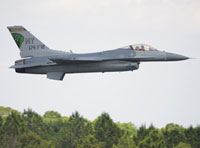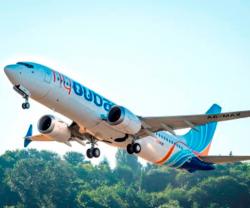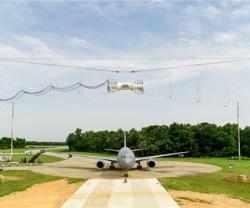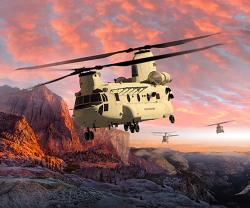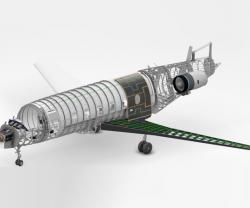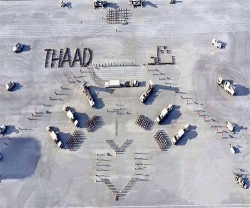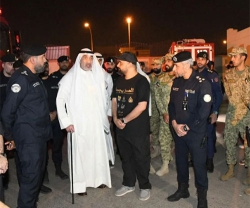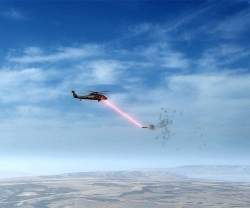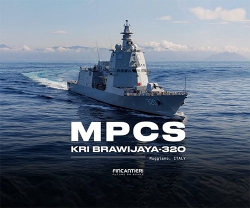Boeing & USAF Complete 1st QF-16 Aerial Target Flight
14.05.2012 North America
Boeing and the U.S. Air Force completed the first manned flight of the QF-16 Full Scale Aerial Target (FSAT) on May 4 at Cecil Field in Jacksonville, Florida.
The QF-16 took off at 3:05 p.m. Eastern time and climbed to an altitude of 41,000 feet during its 66-minute flight.
The Air Force awarded a multi-year contract to Boeing in March 2010 that represented Phase I of the initial engineering, manufacturing and development of the QF-16, with options to buy up to 126 FSATs.
“With this successful first flight of the QF-16, the Air Force, Boeing and our supplier-partners have laid the groundwork for the program to enter low-rate production in 2013 and make its first production delivery in 2014,” said Torbjorn Sjogren, Boeing Vice President, Global Maintenance and Upgrades.
The functional check flight of the F-16, under control of a Boeing test pilot, validated the basic aircraft performance with the QF-16 drone modification package installed.
The additional hardware Boeing installs allows the QF-16 to fly in an unmanned mode while under the control of a ground-based control system such as the Gulf Range Drone Control System (GRDCS) at Tyndall Air Force Base, Florida, or the Drone Formation Control System (DFCS) at White Sands Missile Range (WSMR), New Mexico.
During the current test phase in Jacksonville, a GRDCS mobile trailer with portable transmission towers provides communications between the flight controller and other personnel on the ground and the QF-16 pilot.
“This was a tremendous milestone for the program and for Boeing because it signals our continued success as an off-Boeing platform support and sustainment provider,” said Bob Insinna, Boeing QF-16 Program Manager.
The QF-16s will be a higher-performing aircraft than the QF-4 they replace and representative of fourth-generation targets. They will be flown manned or unmanned within a controlled range and equipped to evaluate how U.S. fighters and weapons will operate against potential adversaries.
Boeing will deliver 6 QF-16 test aircraft to Tyndall in October for additional testing over the Gulf Range.
Following the successful conclusion of these tests, Boeing will support government flight testing from Holloman Air Force Base, New Mexico, over the WSMR complex.
The QF-16 took off at 3:05 p.m. Eastern time and climbed to an altitude of 41,000 feet during its 66-minute flight.
The Air Force awarded a multi-year contract to Boeing in March 2010 that represented Phase I of the initial engineering, manufacturing and development of the QF-16, with options to buy up to 126 FSATs.
“With this successful first flight of the QF-16, the Air Force, Boeing and our supplier-partners have laid the groundwork for the program to enter low-rate production in 2013 and make its first production delivery in 2014,” said Torbjorn Sjogren, Boeing Vice President, Global Maintenance and Upgrades.
The functional check flight of the F-16, under control of a Boeing test pilot, validated the basic aircraft performance with the QF-16 drone modification package installed.
The additional hardware Boeing installs allows the QF-16 to fly in an unmanned mode while under the control of a ground-based control system such as the Gulf Range Drone Control System (GRDCS) at Tyndall Air Force Base, Florida, or the Drone Formation Control System (DFCS) at White Sands Missile Range (WSMR), New Mexico.
During the current test phase in Jacksonville, a GRDCS mobile trailer with portable transmission towers provides communications between the flight controller and other personnel on the ground and the QF-16 pilot.
“This was a tremendous milestone for the program and for Boeing because it signals our continued success as an off-Boeing platform support and sustainment provider,” said Bob Insinna, Boeing QF-16 Program Manager.
The QF-16s will be a higher-performing aircraft than the QF-4 they replace and representative of fourth-generation targets. They will be flown manned or unmanned within a controlled range and equipped to evaluate how U.S. fighters and weapons will operate against potential adversaries.
Boeing will deliver 6 QF-16 test aircraft to Tyndall in October for additional testing over the Gulf Range.
Following the successful conclusion of these tests, Boeing will support government flight testing from Holloman Air Force Base, New Mexico, over the WSMR complex.
Previous PostRaytheon Completes 1st Flight Test of Improved SM-3
Latest news
Latest events
DefenPol China2025 - 7th Guangzhou International Defense & Police Exhibition & Summit
11 - 12 Jul 2025Nan Fung International Convention & Exhibition Center (NICEC) - ChinaIDEF 2025 Turkey - International Defence Industry Fair
22 - 27 Jul 2025Istanbul Expo Center - TurkeyDSEI 2025
09 - 12 Sep 2025Excel, London - United KingdomIntersec Saudi Arabia
29 Sep - 01 Oct 2025Riyadh International Exhibition & Convention Centre - Saudi Arabia

